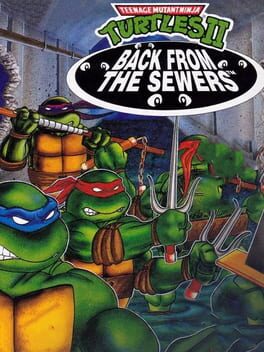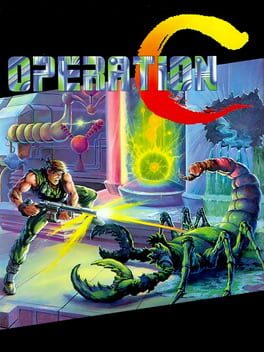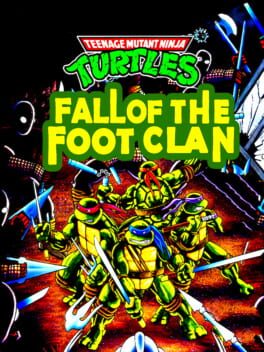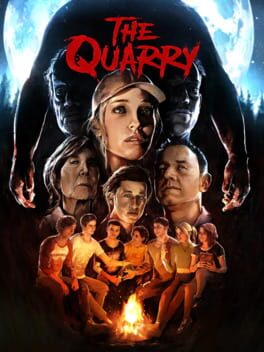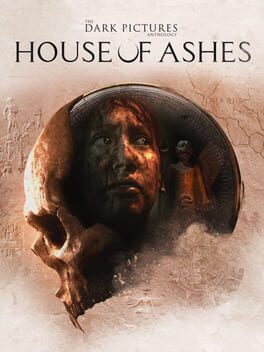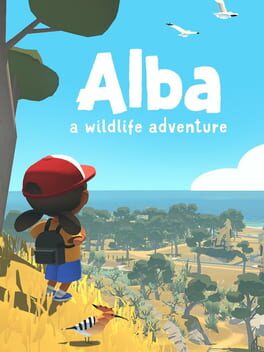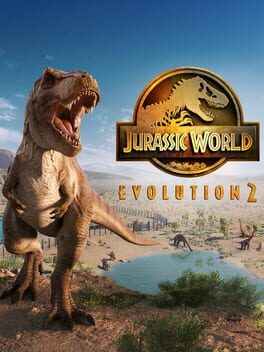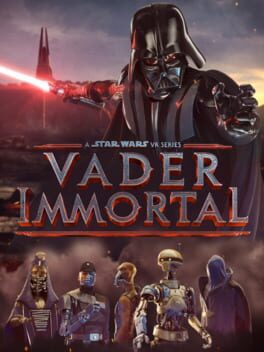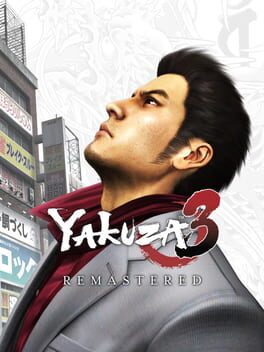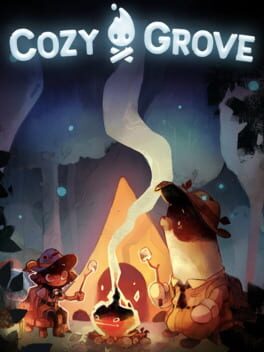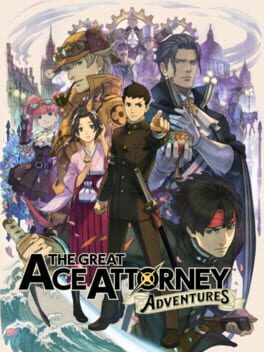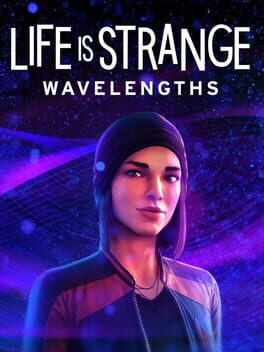Jason0278
'Back to the Sewers' is a 'TMNT' game with unlimited continues, and this is so forgiving that beating it is guaranteed on first playthrough. I, however, only learned about the continues after spending a day unnecessarily training on levels and bosses. To make sure this game provided me with a challenge, I only declared the game completed once I beat it all the way through without using any continues. Now doing this is MUCH harder than it was in the original 'TMNT' Game Boy game, 'Fall of the Foot Clan.' And not in the fair way you'd hope for in a precision action game.
There are sections of this game where the pattern and pace of enemy introductions are such that there is absolutely no way to avoid taking damage. Sometimes considerable damage. The liberal offerings of pizza throughout seem to be an admission of the developers' mistakes. The boss patterns are much more difficult here than in the original game and require pixel perfect accuracy and perfect execution of the slide move. That slide move sucks, let me also say, considering it involves pushing both jump and attack buttons simultaneously and usually results in a jump or an attack rather than the desired slide.
The graphics are more detailed here than in 'Fall of the Foot Clan' but the turtles look dopier and the reach of the weapons is reduced to an absurdly short distance. The hit boxes make less sense here. The level design is messier. And as mentioned, the enemy encounters are poorly designed. A more challenging game, and I felt great beating it without using continues (and with two turtles left in the bank), but I still prefer the elegance and simplicity of 'Fall of the Foot Clan.'
There are sections of this game where the pattern and pace of enemy introductions are such that there is absolutely no way to avoid taking damage. Sometimes considerable damage. The liberal offerings of pizza throughout seem to be an admission of the developers' mistakes. The boss patterns are much more difficult here than in the original game and require pixel perfect accuracy and perfect execution of the slide move. That slide move sucks, let me also say, considering it involves pushing both jump and attack buttons simultaneously and usually results in a jump or an attack rather than the desired slide.
The graphics are more detailed here than in 'Fall of the Foot Clan' but the turtles look dopier and the reach of the weapons is reduced to an absurdly short distance. The hit boxes make less sense here. The level design is messier. And as mentioned, the enemy encounters are poorly designed. A more challenging game, and I felt great beating it without using continues (and with two turtles left in the bank), but I still prefer the elegance and simplicity of 'Fall of the Foot Clan.'
Aloy is one of gaming's great heroes. Her characterization, and Ashly Burch's performance, add up to something so special that these games are almost worth playing just to spend more time with her. She's exactly who she needs to be. And her story here, in 'Forbidden West' is interesting. I love how she inspires characters, all along her journey west, and I love how they come together into one awesome team to face off against this game's interstellar new threat. The strength of this story is nearly exactly the same as that of 'Ghost of Tsushima.' So much so, in fact, that it makes you wonder how direct that inspiration may have been. 'Breath of the Wild' is another clear inspiration, considering how Aloy can suddenly climb any surface and can paraglide down from heights. But I believe 'Ghost' and 'Breath' to be much better games than 'Forbidden West.'
Where 'Forbidden West' trips over itself is in its lore and the communication of said lore. Most of the action that drives the 'Horizon' series took place a thousand years before Aloy was born. We never engage directly with it. It is completely learned through dialogue and the reading of in-game documents. And yet understanding that lore is vital to understanding what motivates Aloy. Vital to understanding what the hell she is doing in either of these games. This might not be such a big ask on the player, but the lore of 'Horizon' is so dense and relies on such much jargon, that I spent hours reading and watching Youtube videos to keep up with it. Across the fifty+ hour playtime, trust me, you will not be able to hold in your memory the nuanced differences among GAIA, HEPHAESTUS, HADES, MINERVA, DEMETER, AETHER, POSEIDON, APOLLO, ARTEMIS, and ELEUTHIA. And those are just the game's artifical intelligences. I have a far easier time making sense of the 'Matrix' movies and that's really saying something. I just don't know why this series chooses to bury the player under so much complicated lore. Too often Aloy is doing something that would only make sense if I still remembered the details of a single conversation, or a single document, experienced tens of hours earlier in the game. I wish each mission did a better job of telling its own story.
The combat action is fun. The graphics are genuinely stunning. Aloy is a peach. But there is a storytelling problem here that gets in the way of complete enjoyment.
Where 'Forbidden West' trips over itself is in its lore and the communication of said lore. Most of the action that drives the 'Horizon' series took place a thousand years before Aloy was born. We never engage directly with it. It is completely learned through dialogue and the reading of in-game documents. And yet understanding that lore is vital to understanding what motivates Aloy. Vital to understanding what the hell she is doing in either of these games. This might not be such a big ask on the player, but the lore of 'Horizon' is so dense and relies on such much jargon, that I spent hours reading and watching Youtube videos to keep up with it. Across the fifty+ hour playtime, trust me, you will not be able to hold in your memory the nuanced differences among GAIA, HEPHAESTUS, HADES, MINERVA, DEMETER, AETHER, POSEIDON, APOLLO, ARTEMIS, and ELEUTHIA. And those are just the game's artifical intelligences. I have a far easier time making sense of the 'Matrix' movies and that's really saying something. I just don't know why this series chooses to bury the player under so much complicated lore. Too often Aloy is doing something that would only make sense if I still remembered the details of a single conversation, or a single document, experienced tens of hours earlier in the game. I wish each mission did a better job of telling its own story.
The combat action is fun. The graphics are genuinely stunning. Aloy is a peach. But there is a storytelling problem here that gets in the way of complete enjoyment.
1991
Considering the platform and the year and the hardware demands of the 'Contra' series, 'Operation C' can only be seen as a triumph. Just a bit slower, and a bit easier, than a typical 'Contra' game, 'Operation C' offers up five very good, very different run-and-gun levels. Horizontal and vertical scrolling and a difficulty curve that gently slopes upward to the conclusion. After a few playthroughs, you'll learn the enemy patterns well enough to beat the game, and a full playthrough, start to end credits, is less than twenty minutes long. But if you're exploring the early days of the 'Contra' series, 'Operation C' is not one to overlook on account of its underpowered platform. This is good 'Contra.'
'Fall of the Foot Clan' is from a time when games could earn praise for having 'responsive controls.' So that gives you an idea of the standards to which this game should be held. In 1990, we were impressed when a game simply responded properly to our input. And 'Fall of the Foot Clan' does just that. It controls well and the hit boxes make sense. You just walk to the right and slash away foot soldiers at the rate of one kill per weapon swing. The only resistance you'll encounter is with the five bosses. But even still, you'll instantly grok their attack/movement patterns. I beat the game after only a few playthroughs and they go quick. A full game playthrough start to end credits takes around twenty minutes. It is notable that these 8-bit characters look even better, and are better animated, here than they are in the original NES game. 'Fall' is an enjoyable game from the early days of the GB. Better than much you'll find on that platform from this time.
2022
'Madison' frustrated more than it frightened. Some of the puzzles are very obtuse so you're left wondering, at times, what the game is even asking of you. Layer on top of that the game's many glitches that prevent your progression but let you continue playing. This is a terrible combination. Sometimes, I would solve the puzzle correctly and nothing would happen in response. So, I would wander the entire house trying to figure out what I was missing. Then, so convinced I did everything correct, I'd consult the internet and learn, yes, I was correct, and yes, the game was glitched. Luckily, a hard reset was all that was ever required to get the game moving again. But damn you can't have puzzles this obtuse AND progression-blocking glitches.
I didn't think 'PT' was a very good game, so I'm not all that thrilled with this trend in 'PT' knockoffs. But there are indeed some very effective jump scares in 'Madison.' Close to the end, they are so frequent and so jarring that I swear I worried for the health of my heart.
I didn't think 'PT' was a very good game, so I'm not all that thrilled with this trend in 'PT' knockoffs. But there are indeed some very effective jump scares in 'Madison.' Close to the end, they are so frequent and so jarring that I swear I worried for the health of my heart.
2022
If you're buying 'Splatoon 3' for the multiplayer, know that you're getting more of the same. Turf War, ranked battles, and Salmon Run are unchanged with the exception of a few new maps, weapons, subweapons, and specials. The modes are all the same and yes, they are as fun here in '3' as ever before. But the differences to multiplayer really only warranted a DLC expansion of 'Splatoon 2,' not a new boxed game. The new content is in the solo experience. I found the new campaign more satisfying than any in the previous games or expansions. Brilliant change to make all the collectibles in the overworld, not the individual levels. I loved that I didn't have to replay levels because of a missed collectible. And there seemed to be many more levels than there were in '2.' I wish there had also been more bosses, because the boss battles are fun. But with so many levels, and so few bosses, they don't quite have the impact here that they did in '2.' The new in-universe collectible card game, Tableturf Battle, is a fun new addition. And the new idols, Shiver, Frye, and Big Man, are cool. 'Splatoon 3' is good, but whereas this all once felt edgy and fresh, now it's kinda just the same old thing.
2022
A marginally interactive experience (not a knock), 'The Quarry' succeeds if it's got good characters. And I'm happy to report 'The Quarry' has good characters. I really enjoyed my time spent with many of them. And they are made more interesting by the fact that you're in control of their behavior and can make them defy their stereotypes in really interesting ways. For example, I love that my Jacob (a really funny Zach Tinker), the stereotypical meathead jock, was actually a whiny, silly goofball in my story. Even if the story that unfolds among our characters isn't exactly riveting, the folklore that explains the threat is interesting, and is made moreso by the optional clues you can find and read, and by the tarot-inspired framing device. I haven't missed a single Supermassive game yet, because their formula is always compelling enough to want more. 'The Quarry' is as successful as 'Until Dawn' and more successful, in my opinion, than several of the more recent 'Dark Pictures' games.
I enjoyed the story of 'House of Ashes' possibly more than I did that of either previous 'Dark Pictures' game. It creatively mixes genres so it is a military story, a vampire story, and a specific kind of science fiction story that I won't spoil here. That is the strength of 'HoA.' Its weakness is the same as 'Little Hope's.' Nothing here necessitates the separate screens co-operative experience. What was so exciting about 'Man of Medan' was that the two players took wildly different paths through the story, intersecting at key moments. At times, because of the mind trippy nature of the threat, the two players might be together in a shared game space, but see the events play out differently. Swapping roles for a second playthrough was an entirely new experience. Here in 'House of Ashes,' the two players are together for nearly the entire length of the game. Walking around together, finding the same clues, reading the same documents, reacting to the same threats. It's fun to chat with a friend while you play, but I hope the future games in this series make the co-op experience essential again.
'Alba' is a great little open-world photography game set on a Spanish-influenced island over one week of a young girl's summer vacation. I found it all to be very charming and comforting and the perfect kick-back video game for my own summer vacation. Along the way, you'll get more goals than just filling out your photo album. Alba becomes an important part of the culture of the island over the one week of game time. It's a stress free game but also one that promotes action, both political and conservational, to make one's living space better than it might be otherwise. 'Alba' is exactly what I needed in my quest for games to give me some summer vibes.
I'm glad to report that nearly every complaint you might have had about the original 'JWE' has been corrected here in the sequel. And the new features, including botanical feeding, staff management, dinosaur herding, and medical services, are truly additive. The content distribution is unlike the original, in that the campaign plays more like a three- to four-hour tutorial, and the bulk of your time will be spent on Chaos Theory story maps (one for each of the six films in the franchise) and on Challenge maps. Building and perfecting in 'JWE2,' whether it is theme parks or wildlife preserves, is just FUN. I played only this game for six weeks and only tore myself away from it to move on to other games in the backlog. A very worthy sequel to an already great game.
So very short for $30. I played the entire campaign, at a leisurely pace, in under three hours, certainly. Maybe under two honestly. But I really did enjoy my time in there. For a 'Star Wars' fan, you really can't beat some of these experiences. A light saber duel with Vader, using force powers to defeat a raging darkghast, flying a ship into Vader's castle on Mustafar, commanding droid troops with light saber swipes. It really is something. And I like the story too. With both this and the 'Obi Wan Kenobi' series, I love learning about the different ways that Darth Vader...cares. His objective here was shocking to me. And indeed I was also surprised by what we learn about the geological history of Mustafar. I'm keeping the star score reasonable only because it's a steep price tag for an experience that's no longer than a feature film. But if you like 'Star Wars,' you really should play this. I played on PSVR and if you care about visuals, this game looks demonstrably better on PSVR than it does on Meta Quest 2.
2018
Haruka brings out the best in Kiryu. I love that she became an enduring part of this franchise. 'Yakuza 3' does have a now-typical game of thrones storyline like all of the previous games. But thanks to Kiryu managing a beachside orphanage with Haruka, 'Yakuza 3' adds a new city, a whole group of new children characters, and new kinds of priorities for Kiryu. Some of the most fun I had in the game had less to do with the big-city machinations of the Tojo Clan families and more to do with managing the orphanage. It was goofing off as a masked wrestler to cheer up a young kid with respiratory problems. It was having a family meeting to explain why a young girl got her feelings hurt. It was worrying about Haruka when she would run off to the city by herself.
This is my fifth game in the series after '0,' 'Kiwami,' 'Kiwami 2,' and 'Judgment.' By now, these games are comfort food for me. Each game rewards the time you invested in the previous games. Old characters show up here, especially in substories, to continue their stories. If I have one criticism of '3,' it may be that there were too many substories and they weren't as wacky as I've come to expect. I completed 106 of them and I missed a few. Minor complaint. I really enjoyed my time with 'Yakuza 3.'
This is my fifth game in the series after '0,' 'Kiwami,' 'Kiwami 2,' and 'Judgment.' By now, these games are comfort food for me. Each game rewards the time you invested in the previous games. Old characters show up here, especially in substories, to continue their stories. If I have one criticism of '3,' it may be that there were too many substories and they weren't as wacky as I've come to expect. I completed 106 of them and I missed a few. Minor complaint. I really enjoyed my time with 'Yakuza 3.'
2021
‘Cozy Grove’ makes a great first impression. Similar to ‘Animal Crossing,’ it plays out in real time, making use of the real world clock and calendar. First few days, and you'll be appreciating the cute visuals, the calming music, and the minimal amount of chores that are asked of you each day. But trust me when I say that this is a deception. The first problem with 'Cozy Grove' is that the game expands every day and the chores (all of them fetch quests) require increasingly more materials and therefore more time to collect them. Several weeks in and you'll be taking quests from ten different neighbors and each of them will be giving you quests that may take days or weeks to complete. It would be maddening enough if you were able to pick and choose which quests to prioritize, but you are not.
This brings us to the next big problem with 'Cozy Grove.' Unlike ‘Animal Crossing,’ ‘Cozy Grove’ is beatable. The story actually does resolve itself and completing the fetch quests is required to progress the story. As the story progresses, the asks get more and more outrageous. By game's end, you'll be getting single quests that ask for, no lie, over 300 items to complete. And if you don't do a quest, the story screeches to a halt. That quest will sit there waiting until you do as you're told. To make matters worse, there is no leveling. You are no more capable on day 100 than you were on day 1. So even though the requests are 100 times more difficult on day 100, you are no better equipped to complete them. It is a game recipe potent enough to put you in the madhouse.
Like ‘Animal Crossing,’ ‘Cozy Grove’ calls itself a lifestyle simulation. But because you are constantly being surprised by material and item requests, you can never just settle down and, for example, make furniture to customize your home or decorate your many gardens that unlock around the island. Does this game really think I’m going to spend 50 hardwood to build a table today when tomorrow it may force me to turnover 100 hardwood to complete a required quest? Why would I do that? Every day neighbors were demanding that I turn over my stuff to them, so my house was just a storage space for items I may need to give away to complete a future quest. ‘Animal Crossing,’ this is not.
By the time I finished ‘Cozy Grove,’ I hated it. I dreaded new neighbors being unlocked. My heart sank with each new unreasonable neighbor request. Others must be having a different experience because a DLC expansion(!) just released called ‘New Neighbears.’ More neighbors and more quests? They must be joking. I just narrowly missed the madhouse the first time around.
This brings us to the next big problem with 'Cozy Grove.' Unlike ‘Animal Crossing,’ ‘Cozy Grove’ is beatable. The story actually does resolve itself and completing the fetch quests is required to progress the story. As the story progresses, the asks get more and more outrageous. By game's end, you'll be getting single quests that ask for, no lie, over 300 items to complete. And if you don't do a quest, the story screeches to a halt. That quest will sit there waiting until you do as you're told. To make matters worse, there is no leveling. You are no more capable on day 100 than you were on day 1. So even though the requests are 100 times more difficult on day 100, you are no better equipped to complete them. It is a game recipe potent enough to put you in the madhouse.
Like ‘Animal Crossing,’ ‘Cozy Grove’ calls itself a lifestyle simulation. But because you are constantly being surprised by material and item requests, you can never just settle down and, for example, make furniture to customize your home or decorate your many gardens that unlock around the island. Does this game really think I’m going to spend 50 hardwood to build a table today when tomorrow it may force me to turnover 100 hardwood to complete a required quest? Why would I do that? Every day neighbors were demanding that I turn over my stuff to them, so my house was just a storage space for items I may need to give away to complete a future quest. ‘Animal Crossing,’ this is not.
By the time I finished ‘Cozy Grove,’ I hated it. I dreaded new neighbors being unlocked. My heart sank with each new unreasonable neighbor request. Others must be having a different experience because a DLC expansion(!) just released called ‘New Neighbears.’ More neighbors and more quests? They must be joking. I just narrowly missed the madhouse the first time around.
With Shu Takumi returning to the series to direct and write, this is 'Ace Attorney' through and through. Everything wonderful and frustrating about the series is back in full bloom here. I enjoyed the change of century (19th) and place (London) here in this first game of 'The Great Ace Attorney' collection. I do however think the characters here are decidedly less colorful than those of the 'Wright Anything Agency.' New protagonist Ryunosuke Naruhodo, while exhibiting some of Phoenix Wright's original trilogy clumsiness, was never quite as engaging as Phoenix. I recognize that this may have been the intention...to bring the series back down to planet Earth.
I enjoyed the story of 'Adventures' and this was especially true of cases 3 and 5. Case 3 has a resolution that is surprising for the series and sets up a cliffhanger that isn't resolved until the final moments of the game. I really enjoyed both of the new game mechanics. 'The Dance of Deductions' was additive to the experience of investigation. And the jury system and 'Summation Examinations' were additive to the experience of trials. Like many games in this series, 'Adventures' is long-winded. Your understanding of the case will almost always be ahead of the characters in the game and they will sometimes take literal hours to catch up. It took me 40 hours to complete this game. Now consider that this is a game where you, almost exclusively, read text. In 40 hours, the average reader can read ~1600 book pages. So the act of playing 'Adventures' is akin to reading a 1600 page book. Sixteen...HUNDRED...pages. I really think that's too long for an 'Ace Attorney' game or for any visual novel, really. It's the literal equivalent of four to five complete novels.
I enjoyed the story of 'Adventures' and this was especially true of cases 3 and 5. Case 3 has a resolution that is surprising for the series and sets up a cliffhanger that isn't resolved until the final moments of the game. I really enjoyed both of the new game mechanics. 'The Dance of Deductions' was additive to the experience of investigation. And the jury system and 'Summation Examinations' were additive to the experience of trials. Like many games in this series, 'Adventures' is long-winded. Your understanding of the case will almost always be ahead of the characters in the game and they will sometimes take literal hours to catch up. It took me 40 hours to complete this game. Now consider that this is a game where you, almost exclusively, read text. In 40 hours, the average reader can read ~1600 book pages. So the act of playing 'Adventures' is akin to reading a 1600 page book. Sixteen...HUNDRED...pages. I really think that's too long for an 'Ace Attorney' game or for any visual novel, really. It's the literal equivalent of four to five complete novels.
Smaller in geographic and topical scope than was 'LoS: True Colors,' but there is a real charm to 'Wavelengths.' Until this side-story, I never clicked with Steph. She always seemed to be trying too hard. And was stand-offy in all the wrong moments. But 'Wavelengths' helped me to understand how Steph was uniquely impacted by the events of 'Before the Storm' and the original 'LoS.' And I cared. And I warmed up to her. I love the seasonal approach to the storytelling here. Though you never leave the record store, you really feel the seasonal changes and the year slipping away. I predicted the final moment of 'Wavelengths,' but it didn't make it any less magical when it happened.
